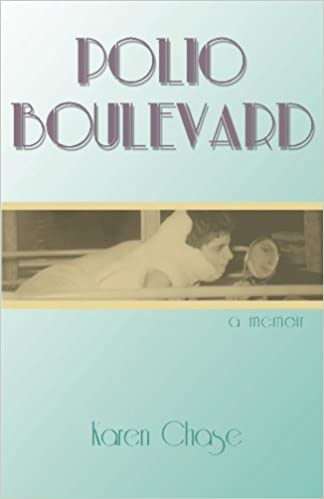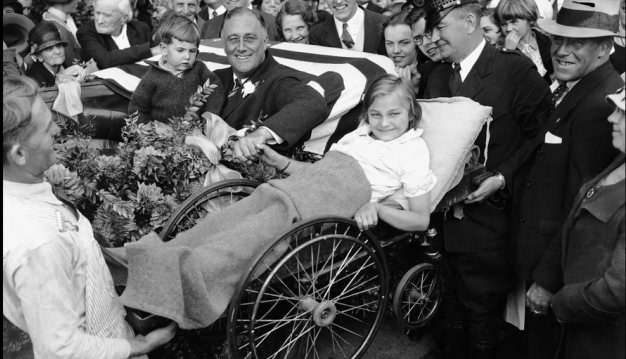Polio Boulevard by Karen Chase
As the country watches Ken Burns’ latest documentary opus, The Roosevelts: An Intimate History, unfold on television, we’ll be given another look at what some have called FDR’s “grand deception”—his campaign to hide the fact that throughout his presidency, he was, due to polio, unable to walk. Apprehensive as to how his public image would suffer if he was seen as disabled, Roosevelt’s family, his aides, and even the media worked together to downplay and conceal the severity of his impairment.
Roosevelt and his battle against one of the most dreaded diseases of the 20th century resonate throughout Polio Boulevard (Excelsior Editions, 2014), a touching memoir written by poet Karen Chase. Chase contracted polio as a 10-year-old in 1953—ironically, at about the same time Jonas Salk was developing the vaccine that would virtually wipe out the disease. (The number of reported polio cases per year has dropped from many hundreds of thousands before the vaccine to less than a thousand today.)
It’s with a poet’s eye that Chase examines the disease and her experience with it. “For decades, polio terrified America, killing and crippling at random,” she writes. “It lurked anywhere, came on as easily as a cold. Any fever, any stiff neck or sore throat caused hysteria.
“Nieces got polio,” she writes, “nephews got it, someone’s cousin got it, a family friend, a kid on your block, a kid in your class, one you liked, one you didn’t, and there they were, paralyzed. Braces, crutches, wheelchairs or dead.”
[giveaway giveaway_id=1666 side=”right”]Chase recovered from her illness, and decades later, after becoming a successful poet, was moved to look back upon her experience. “Everything leads me back to my polio days now,” she writes, telling the story of how she bought a 1950s-era hospital bed at a “junky” antique store.“Lying on this not-just-any bed brings me back to how full of motion the world was as I watched it from my polio bed,” she writes. “Everything but me seemed to be moving. I was immobilized in New York, high up on a hospital ward overlooking the East River. I was horizontal, covered in plaster, couldn’t get out of bed, couldn’t sit, couldn’t walk. I was flat. I had a view of the river, and what I did was watch.”
Polio weakened one side of Chase’s body more than the other. As she recovered, her strong side got stronger faster, leaving her hunched over. To correct the curvature of her spine, surgeons implanted a bone into her back, a process that necessitated her lying in a body cast for a year.
“I lay in bed encased in plaster, turning from a little girl into a teenager as doctors tried to make me normal,” she writes. “I was a butterfly in a cocoon.”
“When I was put in the cast,” she writes, “I was like a road paved with cement. Doctors gave me a huge hard plaster skin. Years later an old friend said I had looked like a monster, the man in the moon. She wanted to get out of my room fast. She was scared.
“I was an alien,” she writes, “rocketing away from myself.”
Often, her reflection finds its way back to FDR, and the private battles he fought against the disease. “Sickness was embarrassing,” she writes. “If you were sick, you were weak, and that was no good. FDR was skillful in this regard. The skill with which he fooled the public about his crippledness was matched by his passion to help others with polio and find a way to prevent it.”
All these years later, Chase still feels the connection the disease gives her to one of America’s greatest presidents. “History is braidlike,” Chase writes. “It turns out that little you (meaning me), and big history (meaning the news), and everyone else (meaning you and FDR), interweave.”
Buy this Book!
Amazon





